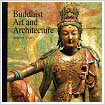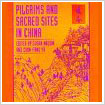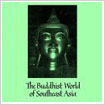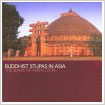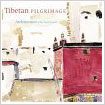Nepal
 Lumbini
Lumbini
Lumbini, the birth place of Lord Buddha, Prince Siddhartha was born here, who later became Gautama Buddha, the founder of Buddhism, which was destined to be the prevalent religion in Asia. Visit Lumbini
India
Bodh Gaya
Bodh Gaya is known at the Buddha's time as Uruvela, is the place where all Buddhas, past and future, did and will become enlightened .It is the centre of the Buddhist universe, the Navel of the Earth. In the middle of the town is the Mahabodhi Temple with the Bodhi Tree behind it and the surrounding shrines marking the Buddha's seven weeks in Bodh Gaya. Visit Bodh Gaya
Sarnath
Just 13 kilometres from Varanasi is Isipathana, now called Sarnath, the deer park where the Buddha first proclaimed the Dhamma to the world. He taught two discourses here, the Dhammacakkhapavathana Sutta and the profound Anattalakhana Sutta. The main things to see are Asoka's pillar, the ruins of the Mulagandhakuti and the huge Dharmek Stupa. Further to the east is the modern Mulagandhakuti Vihara with its beautiful wall paintings and behind it the Deer Park. Visit Sarnath
 Kusinara
Kusinara
In his eightieth year the Buddha and a group of monks arrived in this small place. Ananda described it as 'a wattle and daub town'. Exhausted and sick the Buddha was unable to go on and he laid down to rest between two sal trees. His final hours and the events that filled it are movingly described in the last part of the Mahaparinibbana Sutta which you will find in the Long Discourses. Visit Kusinara
Pakistan
 Taxila
Taxila
Taxila is one of the most famous archaeological sites in the world. For sometime, it has been the center of Buddhism, the world famous Gandhara sculpture and the center of learning and culture. The modern town of Taxila is 35 km from Islamabad. Most of the archaeological sites of Taxila (600 BC to 500 AD) are located around Taxila Museum. Visit Taxila
 Dhamarajika Stupa and Monastery
Dhamarajika Stupa and Monastery
The stupa of Dharmarajika was started by Asoka. It is about 3 kilometers from the Taxila museum on a metalled road ; a new road is being built towards it .Its importance lies in the fact that one of Buddha’s body-relics was buried there . The name Dharmarajika comes from Dharmaraja, a name given to Buddha who was the true Dharma Raja [ i.e. Law Lord ] according to Marshall. Visit Dhamarajika Stupa
 Jaulian Buddhist Stupa and Monastery
Jaulian Buddhist Stupa and Monastery
The stupa and monastery at Jaulian are the best-preserved buildings at Taxila and the only ones in Pakistan that give you some idea of what the original decoration round a stupa was like. A roof protects the plaster statues round the stupa and the site is guarded day and night. Visit Jaulian Buddhist Stupa and Monastery
Sri Lanka
Kelaniya
In ancient times Kelaniya was both a kingdom and a city. As a kingdom it was sometimes independent from Anuradhapura or if not then only nominally under its control. Under the name Kalyani Pattanam the city was the ancient predecessor of Colombo, a major entriport and a meeting place for traders and merchants from all over south and southeast Asia. Visit Kelaniya
 Sigiriya Rock Fortress
Sigiriya Rock Fortress
Sigiriya Rock Fortress is the 5th century “Fortress in the Sky”. It is a rock fortress where King Kasyapa (477-495AD) ruled and is world famous for its frescoes. A great engineering feat, Sigiriya is also a fine art gallery. It was said to have 500 paintings, but today, only 21 remain. Visit Sigiriya Rock Fortress
 Dambulla Cave Temple
Dambulla Cave Temple
The Dambulla Cave Temple, also known as the Golden Temple of Dambulla, a world heritage site, is in the central part of Sri Lanka. Atop this vast isolated rock mass towering 160m is the country’s largest and best-preserved cave temple complex. This rock temple dates back to the 1st century BC and the Dambulla caves are said to have sheltered King Valagamba (also known as Vattagamini Abhaya) during his 14-year exile from Anuradhapura. Visit Dambulla Cave Temple
China
 Yungang Grottoes
Yungang Grottoes
The Yungang Grottoes are one of the three major cave clusters in China, punctuate the north cliff of Wuzhou Mountain, Datong. Believed to be established in 450, Yungang is a relic of the Northern Wei Dynasty (386-534). Absorbing Indian Gandhara Buddhist art, Yungang sculptures developed traditional Chinese art melded with social features of the time. Visit Yungang Grottoes
 Tiantishan Grottoes
Tiantishan Grottoes
The Tiantishan Grottoes are situated on the Huangyang River, about 60 km south of Wuwei. Archaeologists believe that the Tiantishan grottoes may be the Liangzhou grottoes mentioned in historical documents, such as the Fa Yuan Zhu Lin. According to historical records, the Liangzhou grottoes were ranked with the Yungang and Longmen grottoes as the three major cave temple sites to have exerted profound influence on the development of Chinese painting and sculpture. Visit Tiantishan Grottoes
Dunhuang
The historical city of Dunhuang is a renowned tourist city famous for the Mogao Caves. The city landmark is an attractive statue, the idea of which comes from the mural in Mogao Caves, a shrine to the culture and arts of Dunhuang.In ancient times, Dunhuang was the center of trade between China and its western neighbors. Visit Dunhuang
 Mogao Caves
Mogao Caves
The Mogao Caves are the best known of the Chinese Buddhist grottoes, and along with Longmen and Yungang are one of the three famous ancient sculptural sites of China. Today, the site is an important tourist attraction and the subject of an ongoing archaeological project. The Mogao Caves became one of the UNESCO World Heritage Sites in 1987. Visit Mogao Caves
Longmen Grottoes
The Longmen Grottoes are located in the south of Luoyang City. Longmen Grottoes, Yungang Caves and Mogao Caves are regarded as the three most famous treasure houses of stone inscriptions in China. The grottoes were started around the year 493 when Emperor Xiaowen of the Northern Wei Dynasty (386-534) moved the capital to Luoyang and were continuously built during the 400 years until the Northern Song Dynasty (960-1127). Visit Longmen Grottoes
Thailand
 Ayutthaya
Ayutthaya
The Phra Nakhon Si Ayutthaya or Ayutthaya in short, is one of Thailand's historical and majestic highlights. Serving as the Thai capital for 417 years (1350 1767: Kingdom of Ayutthaya), it was once glorified as one of the biggest cities in Southeast Asia. Visit Ayutthaya
 Sukhothai
Sukhothai
Sukhothai (literally Dawn of Happiness), founded in 1238, was the capital of a Thai kingdom considerably larger than Thailand is now, for approximately 120 years. Sukhothai became the first kingdom where before smaller Thai principalities had existed, mostly under Khmer overrule. Thais today view Sukhothai as the cradle of the Thai nation. Visit Sukhothai
Cambodia
 Bayon Temple in Angkor Thom
Bayon Temple in Angkor Thom
Angkor Thom is temple-mountain, a forest of 200 gigantic faces in the mysterious glances looking in all the directions, at enigmatic smiles, at beings of another world, in their smiling serenity. This 3-storeyed temple and 43 m of height is built in 12th century by Jayavarman VII. Its first floors are a pantheon dedicated to the gods Khmers of the beginning of its construction, in a time of transition between the Hinduism and the Buddhism. In the heart of Angkor Thom lies the beautiful Bayon temple. Bayon is one of the few Buddhist temples in Angkor as most are dedicated to Hindu dieties. Visit Bayon Temple
 Ta Prohm
Ta Prohm
Known today as Ta Prohm or "Old Brahma", this monument was initially named "Rajavihara" meaning "royal monastery". Located on the left of the road going from the west entrance to Angkor Wat to the south gate of Angkor Thom, Ta Prohm is a single tower that was one of the 102 hospitals built by Jayavarman VII dedicated to Buddhism. Visit Ta Prohm
Indonesia
 Borobudur
Borobudur
Borobudur Temple is one of the greatest Buddhist monuments in the world. This colossal relic of Borobudur Temple was built by Sailendra dynasty between 750 and 842 AD; 300 years before Cambodia’s Angkor Wat, 400 years before work had begun on the great European cathedrals. Visit Borobudur




